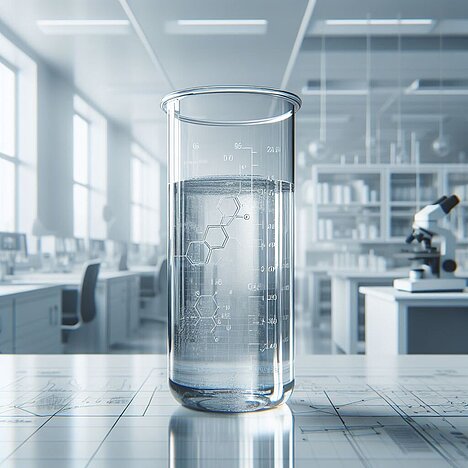2-ethylhexyl acrylate

What is 2-ethylhexyl acrylate?
2-ethylhexyl acrylate belongs to the group of acrylates, which are chemical compounds derived from acrylic acid. It is a clear, colorless liquid that is often used in the manufacture of adhesives, paints, coatings and some cosmetics due to its chemical properties - especially its ability to harden quickly. Due to its versatility, 2-EHA is widely used in industry, but its presence in products that could play a role in dogs' everyday lives raises questions about its safety and compatibility for pets.
Benefits of 2-ethylhexyl acrylate
Industrial applications and indirect benefits
Although 2-ethylhexyl acrylate offers no known benefits directly to the health or well-being of dogs, its industrial applications may indirectly contribute to the comfort and safety of pet products. For example:
- Improved durability of pet toys: toys made with 2-EHA-containing adhesives can be more resistant to chewing and other physical stresses, extending the life of the toy and increasing safety for the dog by reducing the risks of small part ingestion.
- Water-resistant coatings: For outdoor dog beds or cushions, 2-EHA can be used in coatings that protect them from water and moisture, which in turn improves hygiene and comfort for the dog.
Disadvantages of 2-ethylhexyl acrylate
Health risks
Despite its usefulness in various products, 2-ethylhexyl acrylate poses potential health risks to dogs who have direct or long-term exposure to this chemical:
- Irritation: Direct contact with 2-EHA can cause skin and eye irritation in dogs. Particularly sensitive dogs may develop allergic reactions.
- Toxicity: Although the toxicity of 2-EHA in dogs has not been extensively studied, safety data sheets for humans indicate that long-term exposure may be harmful. It is advisable to consider this as a potential risk for dogs as well.
- Inhalation risks: The vapors of 2-EHA can cause respiratory problems, especially in poorly ventilated areas.
Environmental aspects
In addition to the direct health risks, the potential environmental effects of 2-EHA should also be considered. Chemicals released into the environment can affect the ecosystem in which dogs live and thus indirectly affect their health and well-being.
While 2-ethylhexyl acrylate is widely used in industry for its beneficial properties, pet owners should not underestimate the potential risks of this chemical for their dogs. The direct benefits to dogs are limited and disproportionate to the potential health risks that exposure may pose. It is important to use products that may contain 2-EHA with care and ensure that dogs do not come into direct contact with it. The health and welfare of our four-legged friends should always come first.
Properties 5
Are you looking for other ingredients with a specific property?
Just click on them to find more.
If you notice any signs of hypersensitivity or poisoning in your dog, you should see your vet immediately. We are not a substitute for a vet, but we try to be as accurate as possible. Every dog reacts differently and we recommend you get a second opinion or consult your vet if in doubt.
Stay healthy and take good care of your four-legged friend!😊
Similar to 2-ethylhexyl acrylate
Acrylic acid butyl ester, also known as butyl acrylate, is a colorless, volatile liquid ester produced by the reaction of acrylic acid with butanol in the presence of a catalyst. This chemical...
Methyl methacrylate is an organic compound that is widely used in the chemical industry. It is a clear, colorless liquid with a characteristic odor that is used in the manufacture of polymers and...
Acrylic acid ethyl ester (ethyl acrylate) is an organic compound that appears as a clear, colorless volatile liquid and has a characteristic, pungent odor. It is an ester of acrylic acid and is...
Acrylonitrile (CH2=CH-CN) is a colorless volatile liquid that has a sharp, pungent odor at room temperature. It is an important monomer in the production of polyacrylonitrile, a polymer used in the...



